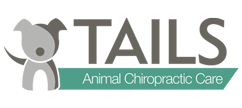Last Updated on September 7, 2023 by Dr. Alisha Barnes

After 10 years in practice, we have been fortunate enough to be able to work with hundreds of dogs diagnosed with IVDD (Intervertebral Disc Disease) and help them to return to as much of a normal life as possible.
We have received this call too often to count and feel so badly for pet parents who feel lost and uncertain about what the next steps are to take. Oftentimes, surgery and pain medication are the only options provided and pet parents are desperate for other ways to help their sweet pups feel better and have a better quality of life.
IVDD indicates damage to a disc or discs in a dogs’ spine. This could range from a disc bulge to a complete disc herniation. These injured discs can cause severe inflammation, pain, and even nerve damage. Most commonly, dogs present with severe pain with movement, loss of nerve function and sometimes even paralysis.
How to IVDD Treatments
The job of intervertebral discs is to act as shock absorbers to the vertebral column (spine) and to protect the spinal cord and nerve roots. So what goes wrong with IVDD? The causes can be many but oftentimes stem from misalignments in the spine which are causing uneven loads on the discs. This can lead to tears in the rings around the discs (annular fibers). When enough damage has occurred, the inner disc material breaks though causing a disc bulge or herniation and severe inflammation.
First and foremost, it is important to bring down the inflammation and get as much pressure off the nerves as possible. This is best done with pain medication and anti-inflammatories prescribed by your veterinarian. Once pain is managed, more healing therapies can be utilized. We have found great success with the combination of acupuncture, laser and gentle chiropractic care. These three therapies work in tandem to provide further healing, pain relief and restore nerve function.
Chiropractic care goes one step further to gently and effectively restore proper alignment and joint motion to the area which not only takes pressure off the disc and nerves but to hopefully reduce the chance of recurrence. When the body is functioning properly, loads can once again be distributed evenly reducing wear and tear on these fragile tissues.
IVDD is a serious condition so proper diagnosis and joint management with your veterinarian is crucial to recovery. It is important for your pet’s whole wellness team to be on the same page so that your pet can receive the best care possible.
This diagnosis can be so scary but there are conservative options available that provide great results in helping your pet be comfortable, mobile and have a great quality of life.
